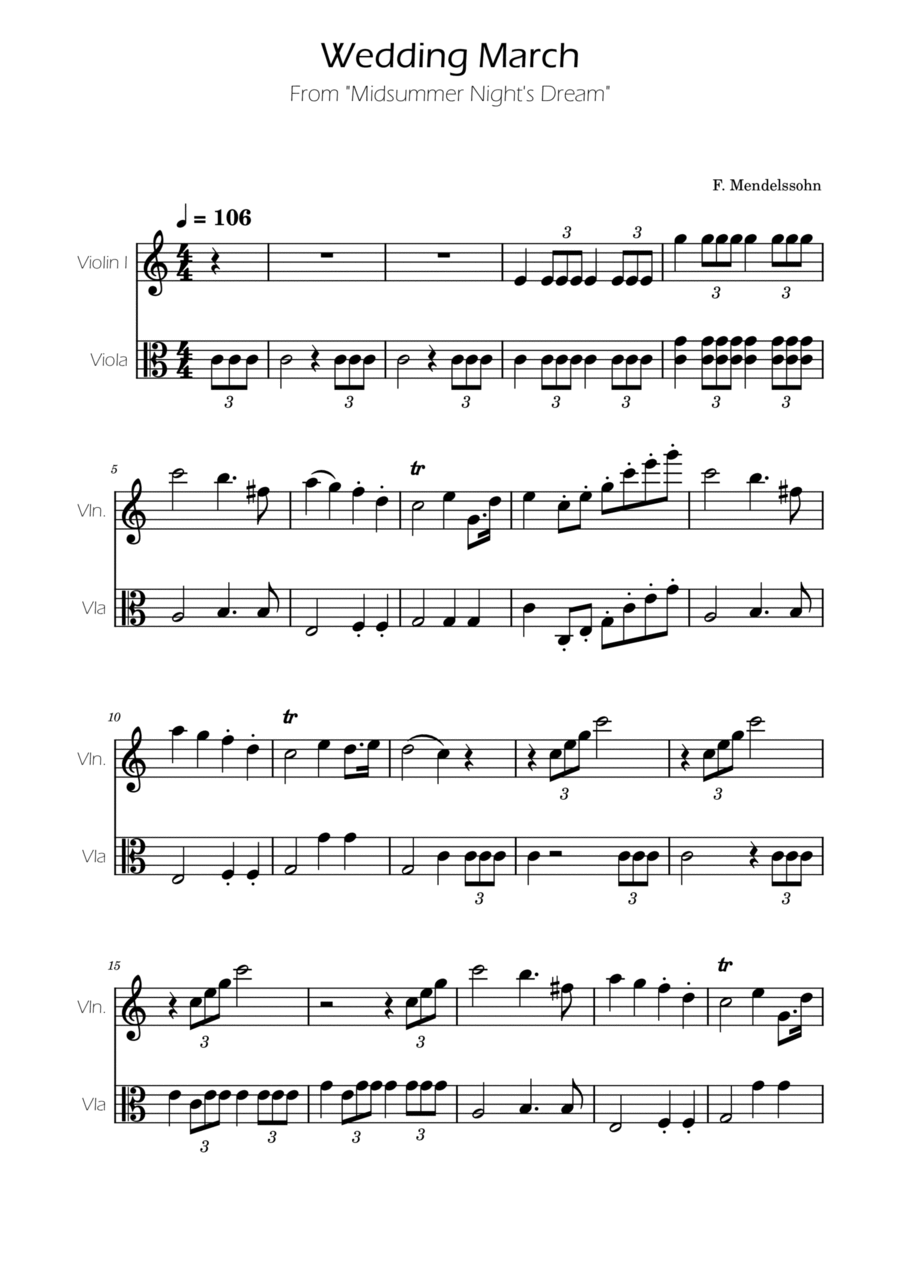Instrumental Duet,Viola,Violin - Level 2 - Digital Download SKU: A0.1226731 By Felix Bartholdy Mendelssohn. By Felix Bartholdy Mendelssohn. Arranged by Ygor Nunes. 19th Century,20th Century,Broadway,Film/TV,Musical/Show,Wedding. 4 pages. Ygor Nunes #822729. Published by Ygor Nunes (A0.1226731). Wedding March, Wedding, March, Wedding March piano, Wedding March easy piano, Wedding March piano easy, Midsummer Night's Dream, Wedding March from Midsummer Night's Dream, Mendelssohn, Â Mendelssohn easy, Mendelssohn duet, Mendelssohn easy quartet, Wedding March, Wedding, March, Wedding March viola and violin, Wedding March easy viola and violin, Wedding March piano easy, Midsummer Night's Dream, Wedding March from Midsummer Night's Dream, Mendelssohn, Â Mendelssohn easy viola and violin, Mendelssohn viola and violin Mendelssohn easy, viola and violin,.
